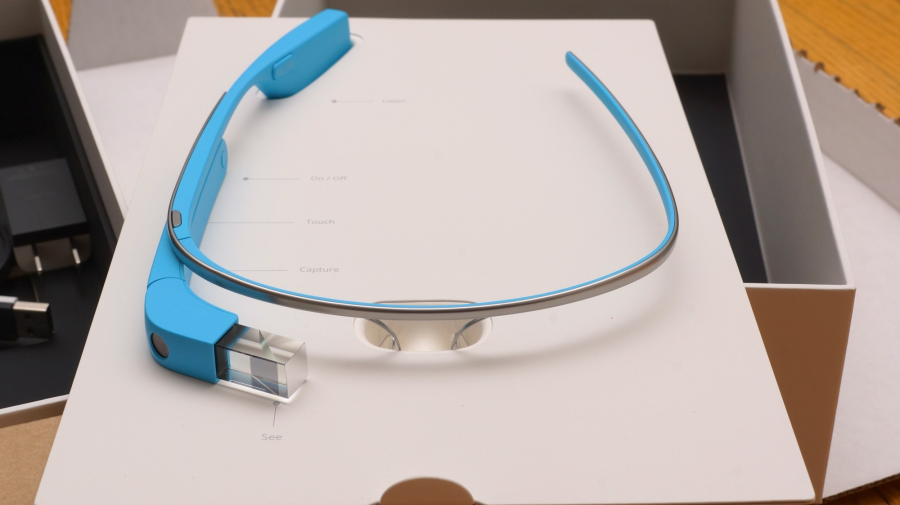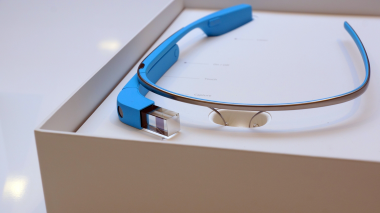
There is no doubt that Google Glass is changing the world, albeit slowly but surely. The South Korean automaker Hyundai has created a Glass app that allows users to connect to their cars in ways never imagined; the NYPD is testing Glass for possible use by officers; Virgin Atlantic is using Glass for passenger check-ins and customer service; and a litany of companies are in the process of building out Glass’s medical potential. With all these advances, however, there has been significantly less talk of or experimenting with the potential education applications for Glass. Less talk, but there is some. Perhaps the biggest barrier to widespread use of Google Glass in the classroom is the price tag: $1500.1

There are an almost infinite amount of practical applications for Google Glass in the classroom. Those educators who already have Glass are doing some remarkable things. In one such example, a Glass Explorer – Andrew Vanden Heuvel – has created a YouTube Chanel dedicated to exploring everyday science. The STEMbite channel is described by Vanden Heuvel:
With STEMbite, you can explore the world like like never before – through the eyes of an enthusiastic young teacher. Subscribe to this channel for engaging, bite-size lessons from a unique first-person perspective through Google Glass.2
Using Google Glass, Vanden Heuvel has recorded tons of videos on topics ranging from the polarization of light, to the physics of tennis, to the conservation of angular momentum. Perhaps Vanden Heuvel’s most interesting recording – and in-fact the reason he has Google Glass3 – was a virtual tour of the CERN Large Hadron Collider in Geneva, Switzerland. Check out the short video:
 There are some other noteworthy uses of Glass in education. Take 365 Days of Glass for example. Margaret A. Powers, Lower School Technology Coordinator for PreK-2nd at a school outside of Philadelphia, was chosen as an early member of the Glass Explorer Program. Inspired by #IfKidsHadGlass Powers set about collecting ideas from Pre-K to 2nd grade students and teachers for ideas on what to do with her Glass. Powers follows thses suggestions and documents them on 365daysofglass.com.
There are some other noteworthy uses of Glass in education. Take 365 Days of Glass for example. Margaret A. Powers, Lower School Technology Coordinator for PreK-2nd at a school outside of Philadelphia, was chosen as an early member of the Glass Explorer Program. Inspired by #IfKidsHadGlass Powers set about collecting ideas from Pre-K to 2nd grade students and teachers for ideas on what to do with her Glass. Powers follows thses suggestions and documents them on 365daysofglass.com.
While both Vanden Heuvel and Powers are using Glass in pretty remarkable ways, there are countless possibilities still to be explored. In particular, Kathy Schrock, a Google Certified Teacher, has laid out some interesting possibilities on her blog:
- Students or teachers creating videos through the eyes of the wearer to share with others. These videos can be recorded and shared via YouTube as well as be shown in real-time by starting a Google Hangout.
- When wearing Glass, the wearer can use both of their hands, and can easily document a science lab, presentation, or other class-related event and post that up to a class Facebook, Tumblr or Google+ account, all via Glass.
- WordLens is a Glassware app that translates what the viewer is reading to and from many languages. This can be very beneficial to a second language learner in the classroom.
- For students with physical handicaps, being able to search the Web via their voice as well as easily send messages to a classroom backchannel, Twitter, or the teacher, can assist them with various classroom tasks.
- For students who are interested in developing applications, Google Glass provides another avenue of developing for a specialized device.4
The implications of Google Glass for education are pretty spectacular, and this will be a very interesting topic to follow as it evolves. Here are some interesting links for more info on Glass in education:
- Google Glass in Education Google+ Community
- Kathy Schrock’s Guide to Google Glass in Class
- 365 Days of Glass
- STEMbite YouTube Channel
- #GlassEdExplorers
- Kevin C. Tofel, Gigaom, “Why Google Glass costs $1,500 now and will likely be around $299 later (Updated)” AUG. 8, 2013 ▲
- STEMbite YouTube Channel ▲
- Andrew Vanden Heuvel, “My CERN Adventure” May 3rd, 2013 ▲
- Kathy Schrock “Google Glass in Class,” February 10, 2014 ▲



Pingback: Ventajas y desventajas del uso de Google Glass en las aulasBlog en español de Wearabletech y Google Glass